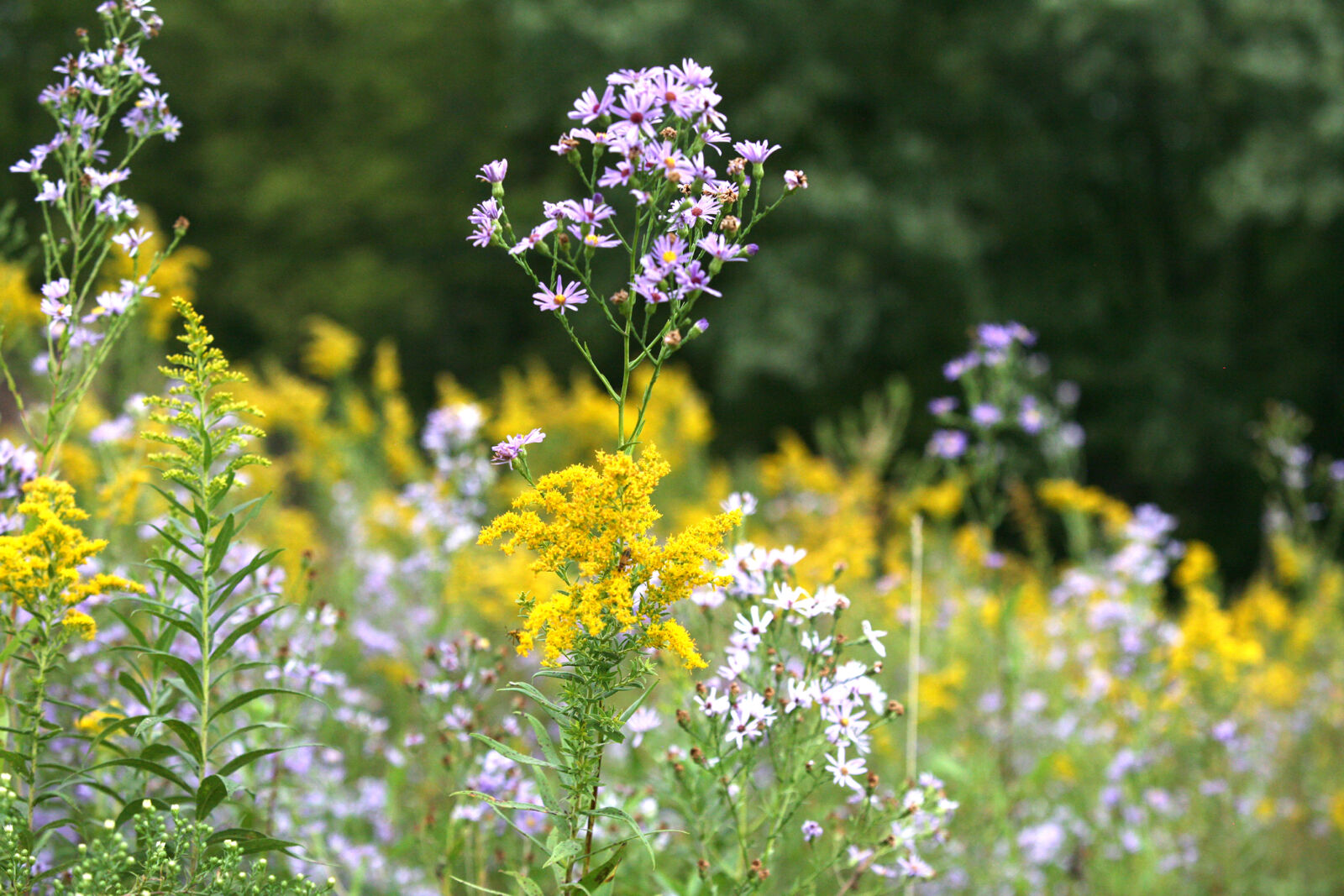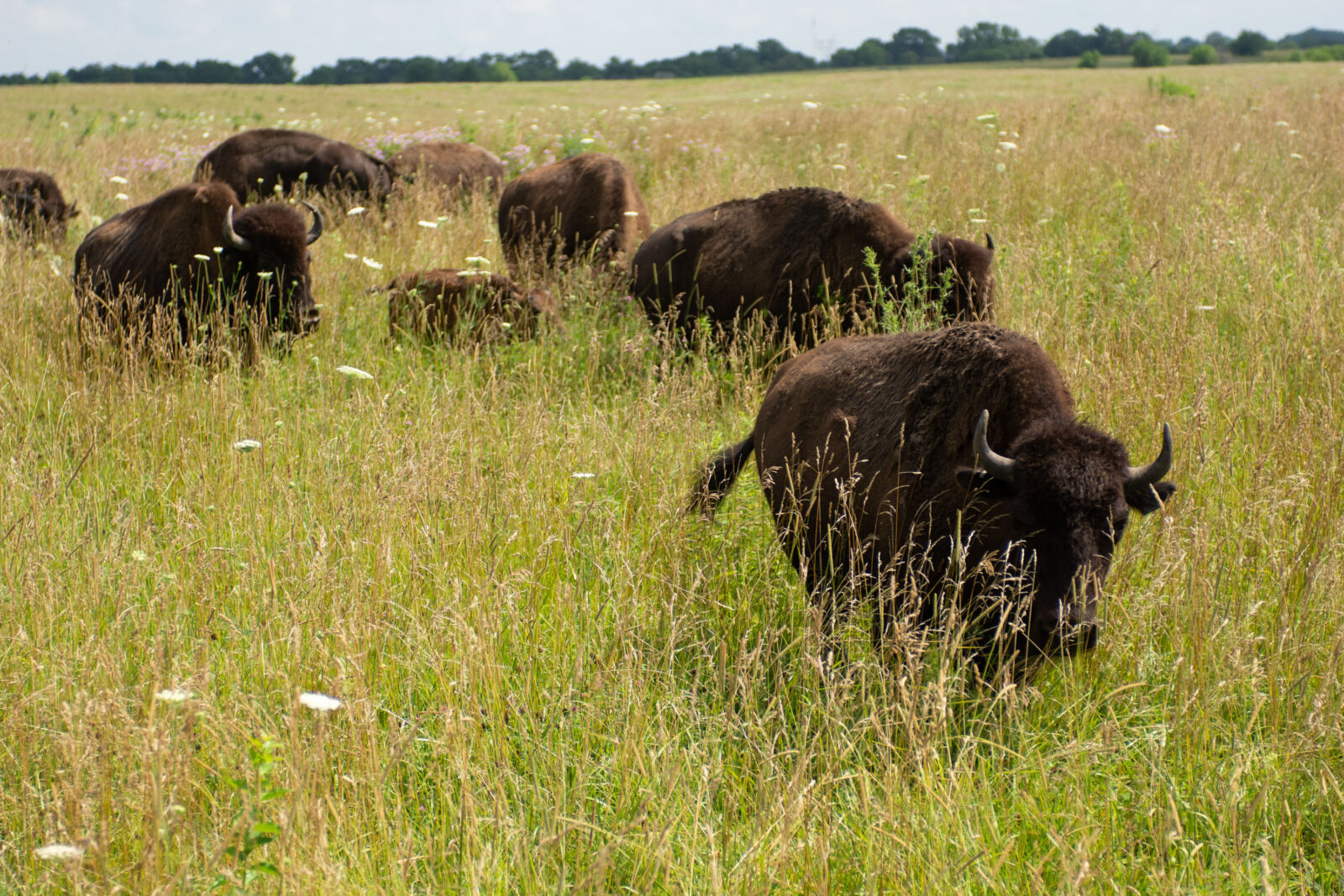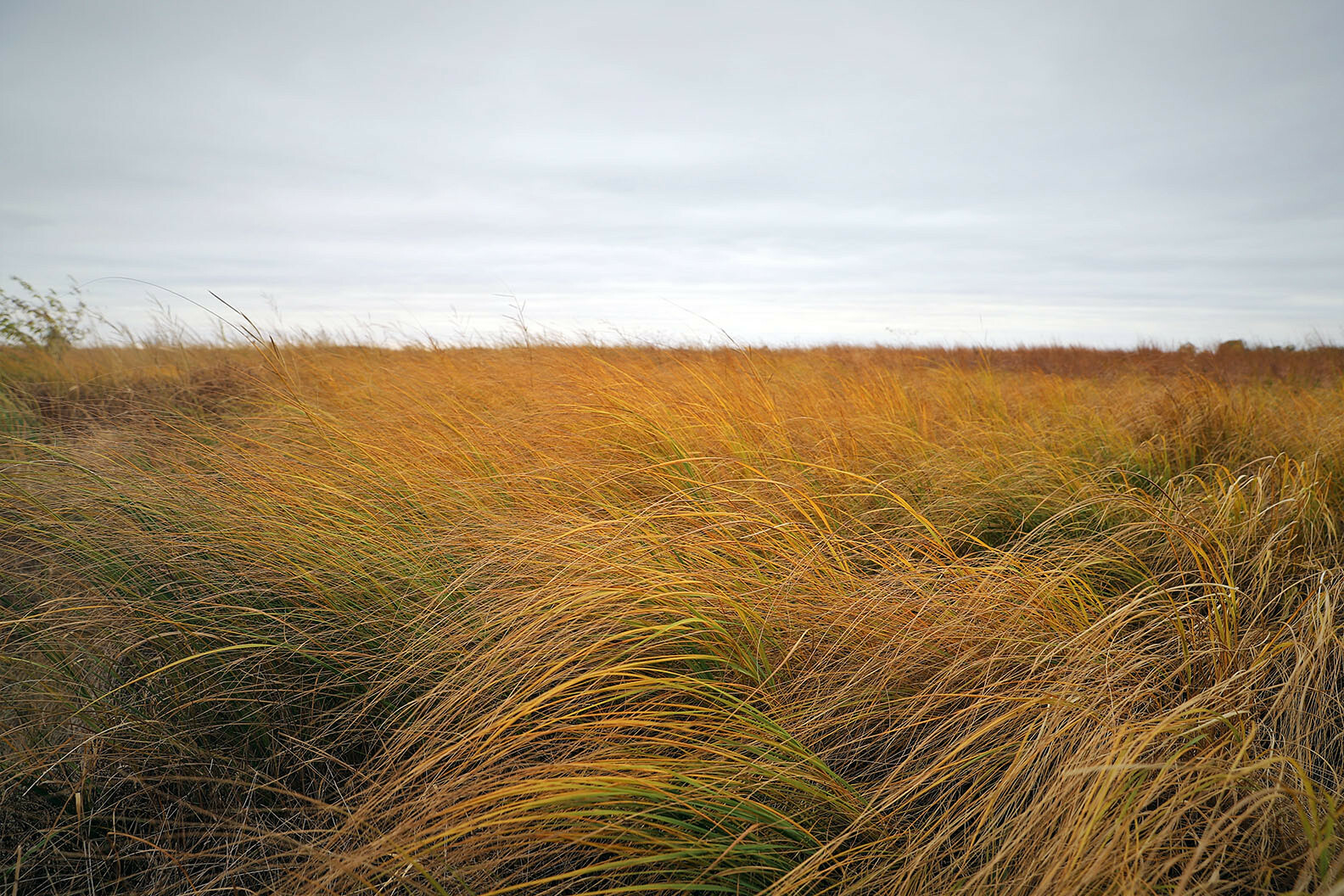An hour away from Chicago’s towering skyscrapers and Lake Shore Drive, Midewin National Tallgrass Prairie takes life at a slower pace. Quiet sunrises showcase fields of wildflowers and chattering birds; bunkers from a different era dot the horizon; and bison stomping, running, and grazing the open grasslands.
The Midewin National Tallgrass Prairie is located on a former U.S. Army ammunition manufacturing plant, which since 1996 has undergone extensive remediation efforts and ecosystem restoration creating a present-day mosaic of tallgrass prairie, pastures, agricultural lands, and wetlands.

Photo by the U.S. Forest Service.
Midewin is also the first, and to date, only National Tallgrass Prairie permanently protected and managed under the U.S. Forest Service. This landscape is an immersive learning and recreational environment that boasts 33 miles of trails, 6,000 acres of restored tallgrass prairie, numerous archeology sites, and a unique history with diverse plant communities that support an abundance of wildlife, including bison and grassland birds.
Tallgrass prairies, like any ecosystem, require many components for a healthy landscape. Since its inception in 1996, Midewin has used traditional restoration methods such as seeding, mowing, prescribed burning, and herbicide, but in 2015, they added a new component – bison. In partnership with the National Forest Foundation and The Nature Conversancy, bison were introduced on 1,500 acres of grassland pasture. Midewin NTP is working with the Northern Research Station and through an agreement with the University of Missouri to study the effectiveness of bison as a tool to help restore the tallgrass prairie in Illinois by improving native vegetation diversity and creating suitable habitat for grazing-dependent grassland bird species.

Photo by Lynn Renee Photography.
Earlier examples of bison introductions in North America have occurred for management after the re-establishment of native prairie; however, at Midewin, they are interested in the effects of bison grazing in concert with traditional restoration and land management methods. The experiment is planned for up to 20 years unless experimental data indicate a need to extend, reduce, or terminate.
On March 10, 2023, the Biden-Harris Administration announced more than $12 million from President Biden’s Bipartisan Infrastructure Law in support of the Tribal Forest Protection Act (TFPA). Midewin National Tallgrass Prairie was awarded a piece of this funding to continue work on The Bison Experiment.

Photo by the U.S. Forest Service.
Midewin currently works with the InterTribal Buffalo Council on bison transfer and best practice sharing for prairie restoration. By extending this project, they hope to create a strategic plan for continued Tribal collaborations of cultural and ecological value. The knowledge gained through this experiment and the extensive partnerships developed are critical to continuing to restore the native prairie landscape, impacting both people and the ecosystem.
Looking for an opportunity to visit the bison in person? The Iron Bridge Trailhead is the most direct route to trails extending the north and west perimeter of the bison pasture. Plans are underway to better utilize the Bison Show Pasture with the hope of increasing the public’s opportunity to visit these majestic animals up close and in their native habitat. The efforts of the Bison Experiment, along with the traditional restoration methods mentioned above, have and will continue to make Midewin one of the most desirable places to experience an array of grassland and native bird species.
Cover photo by Lynn Renee Photography.
--------
Bison, bears, bats…you name it, and forests have it. We hope you enjoyed this blog and that you’ll explore the other fascinating wildlife topics here. Just as the wildlife we all cherish depends on healthy habitat, the NFF depends on support from generous, involved individuals like you! Please click here to make a much-needed unrestricted gift today. On behalf of the bison, bears, bats, and countless more creatures, thank you!

